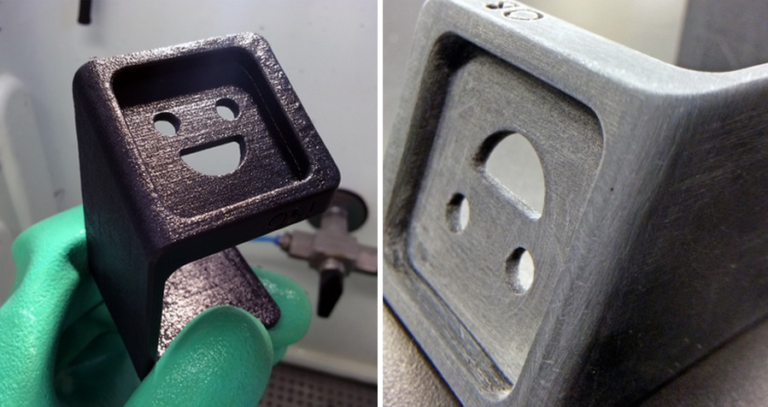YOU MIGHT ALSO BE INTERESTED IN

Recommended Wall Thickness for 3D Printing
Learn More

Methods for Cleaning 3D Printed Parts
Learn More
3D Printing Materials
Process
Lead Time
Colors
Resolution
Price
Applications
VeroClear (previously “Transparent”) is one of our quick-turn translucent materials, fabricated using Polyjet 3D printing technology. It works great to replicate clear parts or create light pipes which need to diffuse light over a distance. With a little elbow grease, we can also sand VeroClear parts to get a higher level of clarity through manual sanding and painting.
Tensile Strength
58 MPa (8400 PSI)
Modulus of Elasticity
Flexural Strength
VeroClear has a translucent finish. The part printed as-is prints clear enough that light and the shape of objects can be made when looking through the part, but is not ideal for glass-like clarity. This is a high resolution print, however, so you won’t see build lines when looking at the part directly on the surface that was printed laying flat on the print bed.
Sanding + Clear Coat for Increased Transparency
If you need slightly more transparency than what the standard print achieves, sanding the part and adding a clear coat will help. Here are the steps:
Waterclear Finish
If you need a waterclear part that resembles glass-like clarity, we recommend Accura Clearvue, a speciality 3D printing material we offer on request. Accura Clearvue is fabricated using SLA technology, which is then finished professionally to get a very clear finish.
Max Part Size [x, y, z]
Min Clearance + Gaps for Fit
Min Wall Thickness
Internal Cavities
Internal cavities are highly discouraged with VeroClear due to the water-based support material that will swell and change the geometry overtime if left inside. Note that support material that has no direct line of sight inside a cavity cannot be cleaned out.
Threads & Inserts
For VeroClear, we recommend you use either press or heat inserts. For more information, check out our article on The Best Fasteners for 3D Printed Parts.
Text Guidelines
Text should be embossed by at least 1.0 mm to stay visible after printing. Text should also be at least 1.5 mm thick in all areas.
Tolerance
Tolerance for VeroClear is +/- 0.004”, or +/- 0.001” per inch, whichever is greater.
Learn More
Learn More